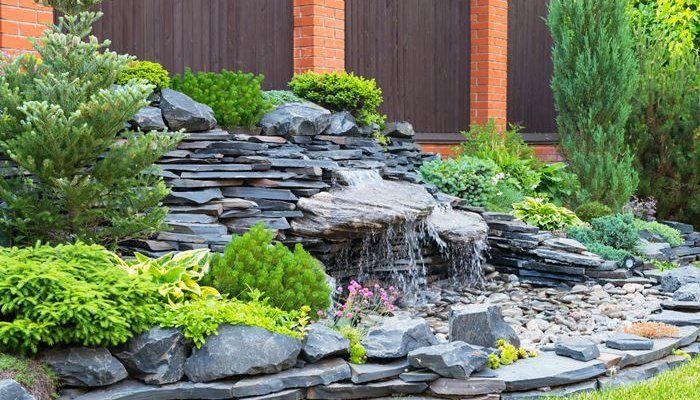
The creation of artificial ponds is a popular area of landscape design. The waterfall will become the visual center of the site. It is always cool around it on a hot day. Unlike a massive artificial pond, a waterfall is a more practical solution. Less resources are needed, cheaper, and less maintenance is required. To create a structure of this kind will require imagination, certain building skills and the right tools.
Content
Choosing a place for a waterfall in the country
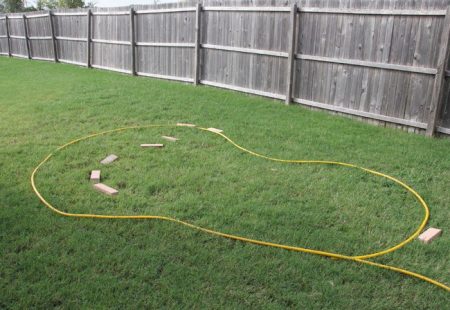
The more shrubs, flowers and trees around it, the better. If the site has incline terrain, then the waterfall is mounted there. In the event that there is none, you will have to create it yourself. The shape of the bottom is limited by the imagination and wishes of the customer. Do not go too far. Green spaces should cover no more than 1/3 of the waterfall, otherwise the composition is lost from view. One more rule - the place where the waterfall will be placed should be protected from direct sunlight.
Choosing a bowl for a waterfall
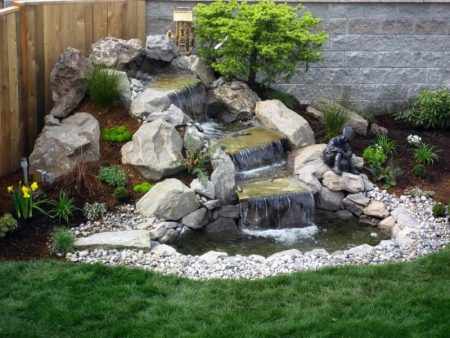
The curved shape is a classic of the genre. It is easy to fit into the landscape of any site. The closer its appearance to natural sources of water, the better. The second rule - when choosing a form, you need to be more repelled from the existing relief. The bowl should repeat it as accurately as possible. If, when looking at the site, one cannot say where the creations of nature end and the artificial reservoir begins, then the project turned out to be successful.
The geometry of the structure affects the depth of the bowl. At the design stage, all the details are taken into account. In the event that the artificial pond is filled with underwater flora and fauna, its minimum depth will be at least 1.5 m. The given value changes taking into account the climatic features of the region. The basis is taken the depth of freezing of the soil.
Waterfall size selection
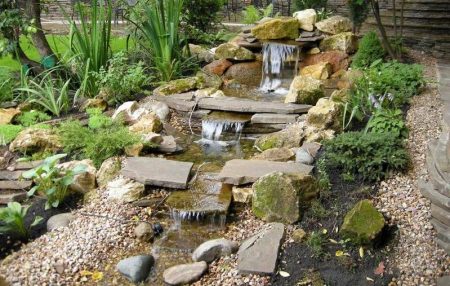
As a basis, you need to take the geological features of the site and your own wishes. The second caveat - the size of the future design determines the minimum required power of the pumping equipment. There are 3 possible options:
- Shallow waterfall - used to create a decorative effect. Optionally, the surface is decorated with artificial vegetation or design elements.
- Medium waterfall - its depth does not exceed 1 m. Thanks to a slight deepening, the bottom is always visible. A beautiful landscape is being formed. If you look at a medium-sized waterfall from a functional point of view, there is no problem with cleaning it. Optionally, the bottom of the structure is populated by underwater inhabitants.
- Deep waterfall - is used not only to create a visual effect, but also to get full pleasure. The minimum depth of such a design is at least 1.5 m. Children and adults can splash in the bowl.
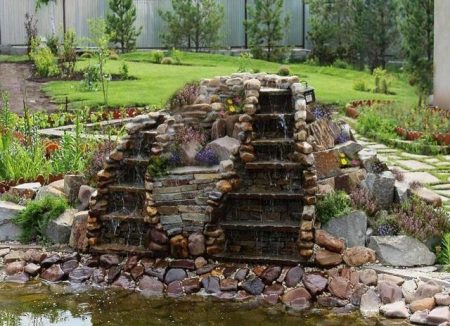
If you choose the latter option, you need to be prepared to overcome certain difficulties. It is about strengthening the coast and minimizing the use of artificial and natural stones. Everything is done as part of safety precautions. The less likely you are to slip or bump while you are near a waterfall, the better.
Getting started with a do-it-yourself waterfall
A technically correct project is the key to success. It prescribes the depth, shape and width of the bowl, the height of the waterfall, and so on. The more accurately significant parameters are indicated, the easier it is to choose pumping equipment. As soon as the theoretical part is completed, the practical begins.
Territory marking
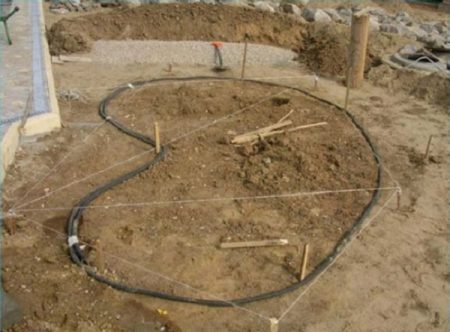
The selected plot of land is outlined. 30cm is added to the selected area of the reservoir, due to the thickness of the bowl used. The further procedure is as follows:
- stakes are driven in along the drawn outline - the recommended step between them: 20-30 cm;
- they pull the rope between all the stakes without sagging - it serves to visualize the shape of the bowl.
During work, the builder makes sure that the pegs do not fall. Otherwise, the work will need to be stopped.
Foundation pit
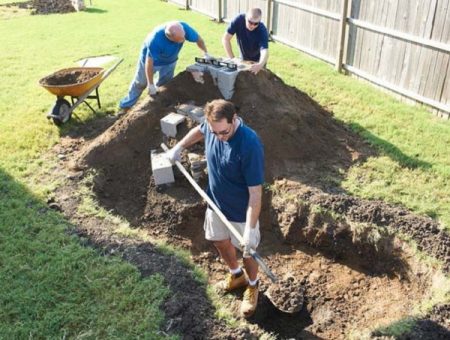
Before starting digging, a place is selected in advance where the extracted soil and stones will be stored. You should not throw them away, because at the stage of arranging the waterfall, stones and earth will be needed. Once the design depth is reached, the bottom is sprinkled with sand. The layer thickness is 12 cm. Then the bottom is carefully tamped. The next stage is the creation of a slope from which water will flow. Here you will need previously extracted soil.
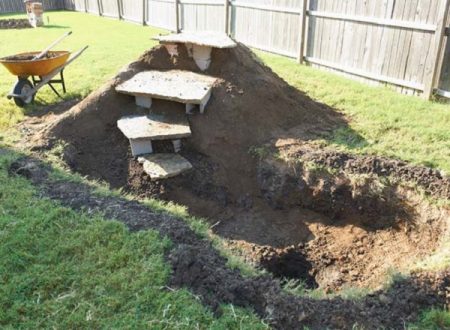
During the construction work, the pit will be partially covered with earth. Regular moistening and tamping of the soil will help prevent such a development of events. A common mistake - at the stage of digging a pit, they forget about the need to allocate space for the installation of a hose connecting the pump and the waterfall.
The following tips will help prevent this from happening:
- complete digging a pit;
- make a groove - it runs along one of the walls of the drive.
Once all work is completed, the walls are once again moisturized and tamped.
Waterproofing and the bottom of the waterfall
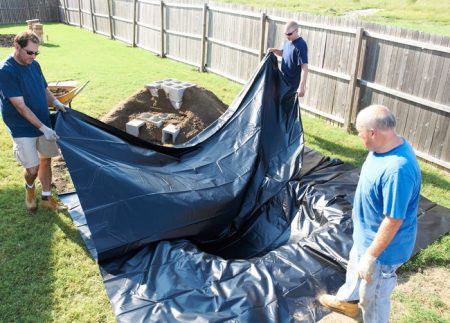
Waterproofing works are carried out using a plastic film. The greater its thickness, the better. Replace the film with waterproof geotextile. Often the pit size is larger than the maximum film size. In a similar situation, they lay the waterproofing material with an overlap. Its minimum value is 50 cm or more. After laying the film, you need to make sure that the material covers the walls and the coastline.
Do not worry that the appearance of a film or textile will worsen the landscape. All details are easy to hide, using decorative elements. Fine gravel is placed on top of the film. Its thickness is 5-10 cm. The task of such a shock-absorbing pillow is to prevent the destruction of the waterfall in the event of the start of soil movement. After the gravel layer is tamped, it is covered with a fiberglass reinforcing mesh. The recommended cell size is up to 4 cm. The final step is to fill the base with concrete mortar. It dries for at least 4 days.
Bowl wall
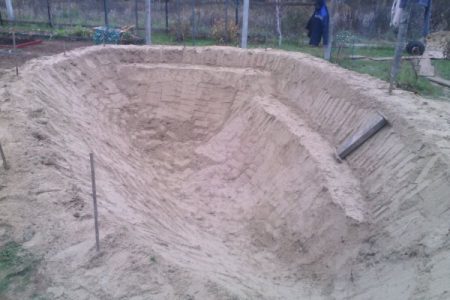
To fix the grid and install flexible formwork, you will need plastic fasteners. You can find these items in any building goods store. At the next stage, concrete mortar is poured into the formwork. As in the previous case, it dries for at least 4 days. At the next stage, the formwork is carefully removed. It often happens that after removing the formwork, the walls look uneven. Do not despair. The lack of symmetry only gives the waterfall greater naturalness.
Pump installation
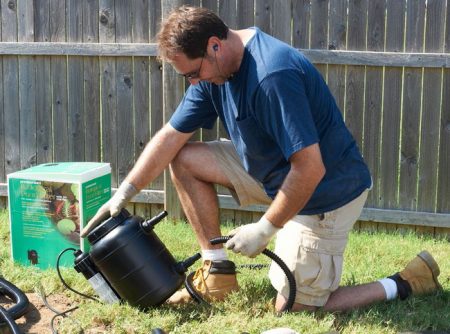
For the correct calculation of the power of the unit, several parameters are taken. We are talking about the displacement, the height of the cascade and the volume of the used bowl. Fans of minimalism will perfectly manage the pump, whose power does not exceed 70W. The forum will help to prevent mistakes: K x W x24 x 60: 100.
The value of the variables is as follows:
- K is the coefficient of flow velocity.If it is slow, then the value is assumed to be 5, if the average - 10 and 15, if you need a rapid flow of water.
- W - the width of the waterfall, measured in meters.
When choosing a water flow rate, it is better to stop at an average value. Otherwise, the risk of rapid deterioration of equipment increases many times. Another nuance is the need to take into account the losses associated with friction.
| The required expense (l / min) | Diameter of the used hose (mm / inch) | Loss of pressure (m.v.st. / m. Of a hose) |
| 30-50 | 20mm - ¾´´ | 0,12-0,35 |
| 50-75-100 | 25mm - 1´´ | 0,08-0,19-0,34 |
| 150 | 32mm - 1 ¼´´ | 0,21 |
| 150-200-250 | 40mm - 1 ½ ´´ | 0,07-0,12-0,15 |
| 300-350-400-450 | 50mm - 2´´ | 0,08-0,10-0,14-0,17 |
These figures indicate a direct relationship between the diameter of the hose and the efficiency of the pump. At the design stage, you need to select the desired water flow rate and, accordingly, the planned flow rate. For example, the choice fell on the range of 100-150l / min. For such a waterfall, you need a hose whose diameter is 40mm-1 ½ inch. You can not take less than the specified value.
Another nuance when choosing pumping equipment is associated with the correct choice of its type:
- Submersible - their installation is carried out to the bottom. According to the safety standards, units are allowed to be installed only in those waterfalls that carry only an aesthetic load.
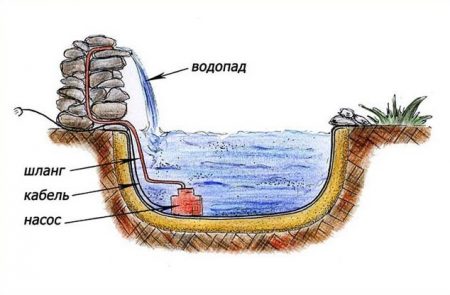
- Surface - are placed near the waterfall. Connected to it with a wear resistant hose.
In the latter case, it is required to decorate the used hose at the stage of concrete pouring.
Any type of pump used needs a constant source of energy - 220V. At the design stage, you need to make sure that the length of the cable used is sufficient. If there is a shortage, then an extension cord equipped with waterproofing will come to the rescue.
DIY waterfall decoration and lighting
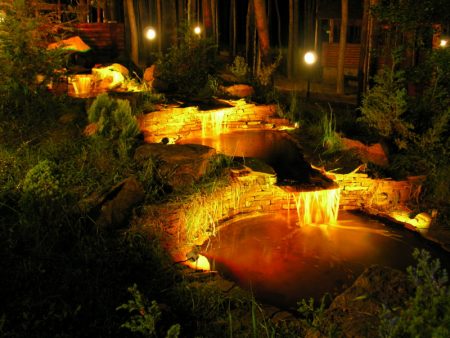
When choosing decorative elements and lighting, they rely on the chosen style of the waterfall. The channel is laid out with the help of small pebbles, and the edges of the reservoir - with large cobblestones. If natural decorative pebbles are at hand, then they will also be useful for decorating the channel. Sandstone is often used to frame the coast. Without fail, the mentioned material is used to frame the cascade. Otherwise, the spray will constantly fall on the surrounding objects.
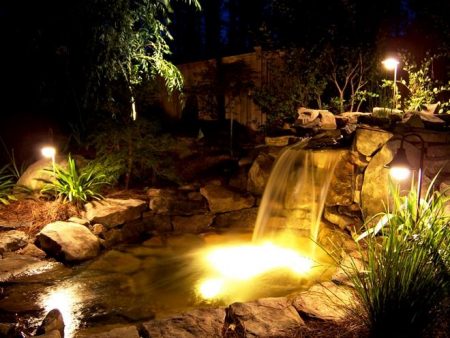
Near the waterfall, 1-2 benches or arbors are installed. It all depends on the size of the plot. No less caution must be exercised when choosing a lighting system. She always harmonizes with the style of the whole garden. One of the most common options is luminous stones made of waterproofing material. With their help, the cascade was backlighted. In the past few years, a new type of backlight has appeared. Visually, it is compared with water lilies. Flashlights float on the water, slowly swaying from the pump.
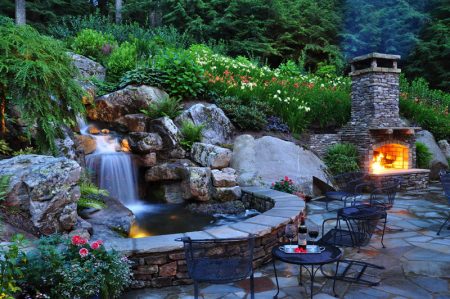
What to plant plants for a pond with a waterfall
The bet is on several varieties, characterized by increased resistance to prolonged exposure to external negative factors.
Namely:
- calamus marsh;
- Buzulnik;
- various varieties of fern.
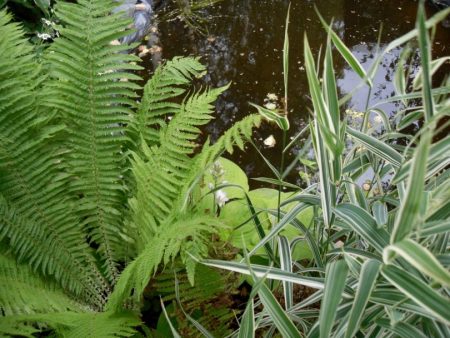
In those cases when a large waterfall has been erected on the site, the choice is best made in favor of water lilies. When choosing green spaces, you need to remember the golden mean. It is better to leave an empty space than to occupy everything with green spaces. Designers recommend planting the already mentioned water lilies at the bottom of the piston. They give the bowl a more natural look and purify the water.
Near the waterfall you can plant roses. Regardless of the type of green space chosen, you need to remember an important rule. If the waterfall is clearly visible only from one side, then the plants are planted from the opposite.
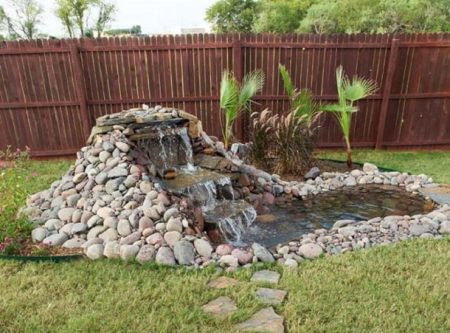
Conclusion
A large and not very artificial waterfall on the site will become a visual center. Its size is selected taking into account the available area and the wishes of the gardener. A detailed project that takes into account all the technical parameters will help reduce the likelihood of errors. There should be no errors in it, otherwise it will not work to choose a pump with high efficiency.After completion of construction work, the lighting system is installed, the plants are planted and decorative elements are installed.

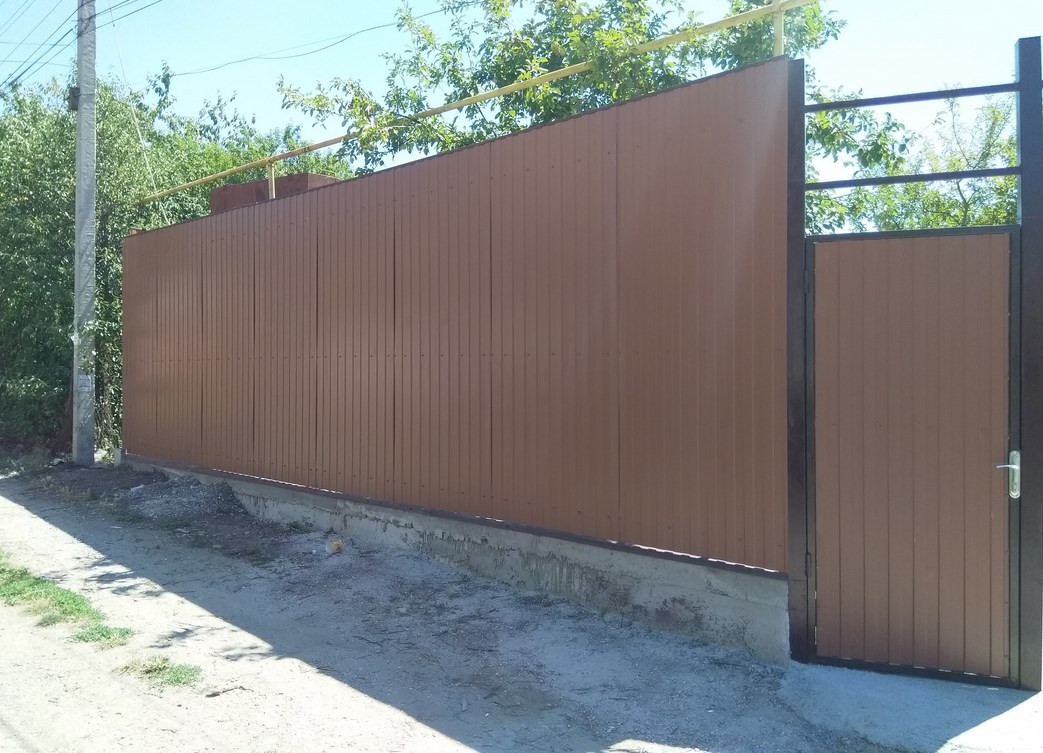
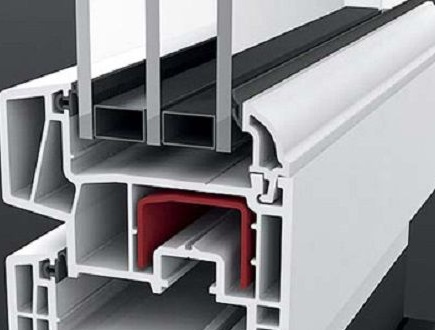
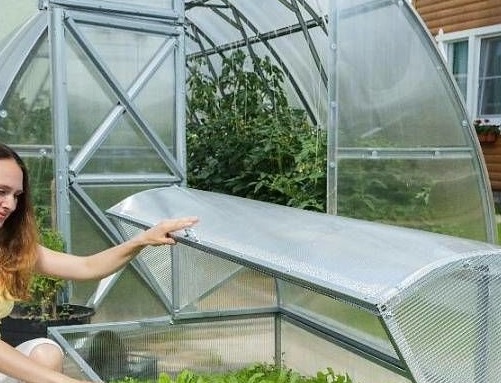
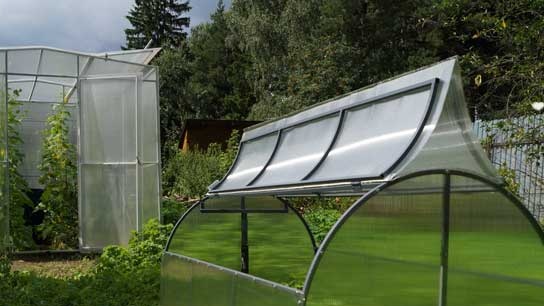 Why is a greenhouse open top?
Why is a greenhouse open top?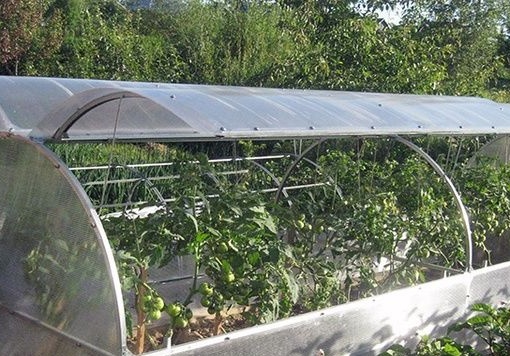 Greenhouse "Butterfly", is it worth it?
Greenhouse "Butterfly", is it worth it?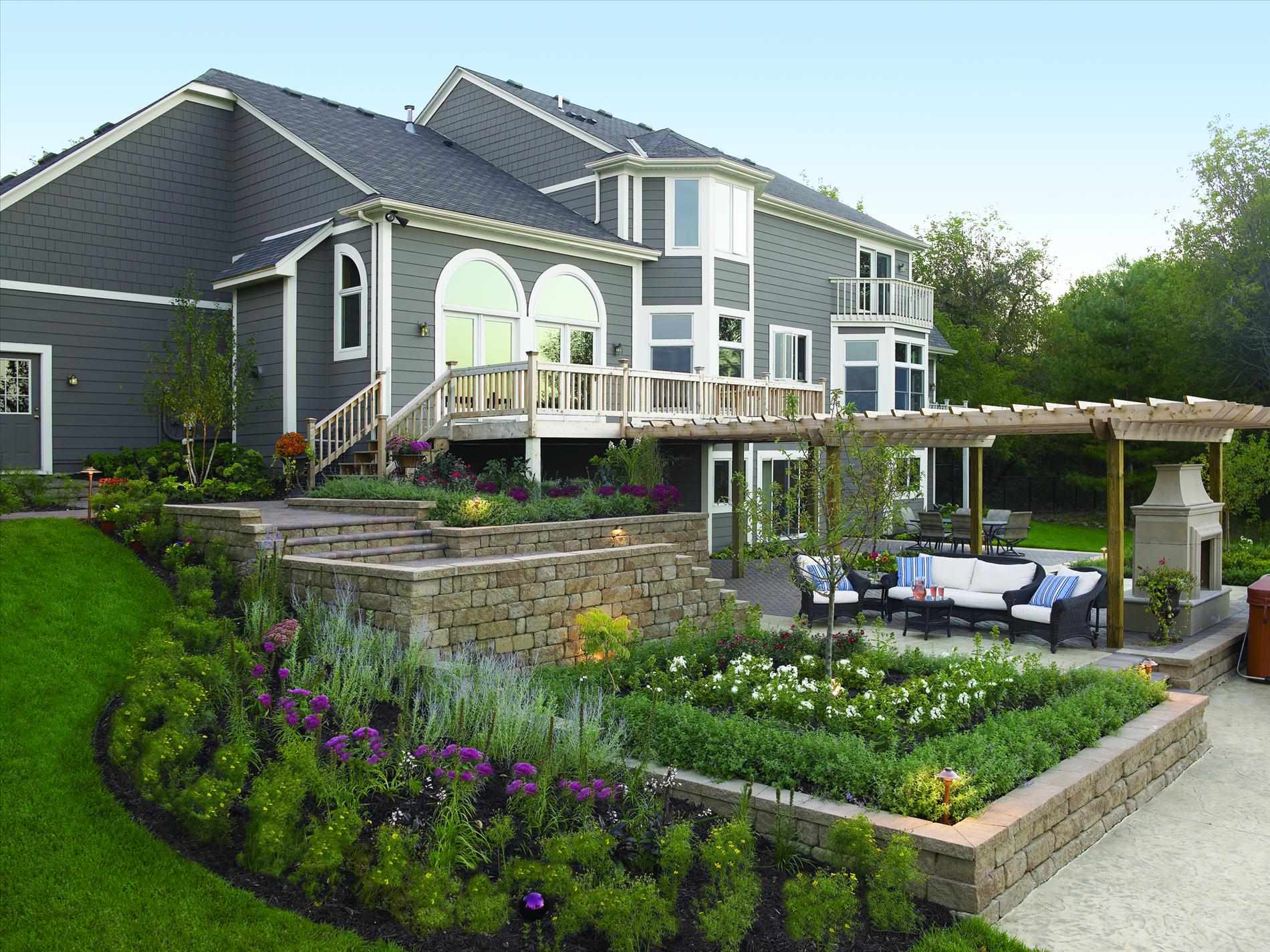 Do-it-yourself landscaping of an area of 8 acres: features of planning and zoning
Do-it-yourself landscaping of an area of 8 acres: features of planning and zoning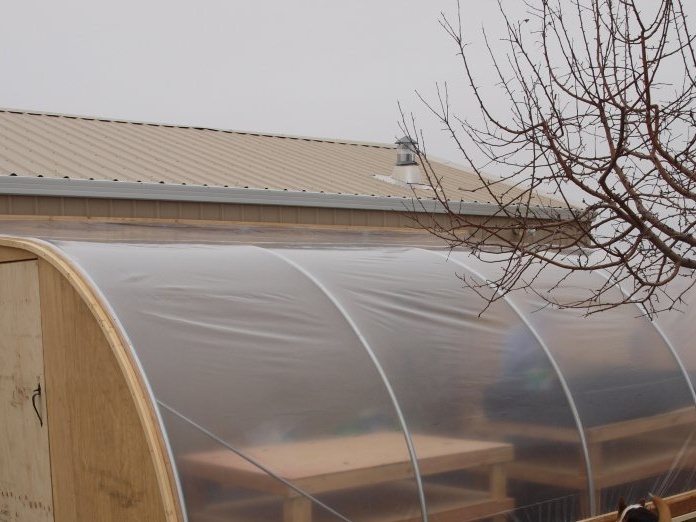 Shed greenhouse, pros and cons
Shed greenhouse, pros and cons